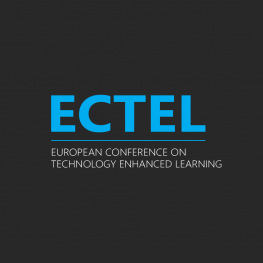Speakers
Esteban Villalobos
Université Toulouse III, FranceMar Pérez Sanagustín
Université Paul Sabatier Tolouse IIINorbert Noster
University of WürzburgStart
14/09/2022 - 11:00
End
14/09/2022 - 12:30
Address
Room B308 View mapSession: Self-regulated Learning and learners’ strategies
Chair:  Carlos Alario-Hoyos
Carlos Alario-Hoyos
Supporting Self-regulated Learning in BL: Exploring Learners’ Tactics and Strategies
★ Best paper candidate
Esteban Villalobos[1], Mar Pérez-Sanagustin[1], Cédric Sanza[1], André Tricot[2] and Julien Broisin[1] [1] IRIT, Université de Toulouse, France [2] Université Paul-Valéry Montpellier 3, France
Abstract: In the past years, Blended Learning (BL) has gained traction as a methodology in Higher Education Institutions. Despite the positive effects of BL, several studies have shown that students require high levels of self-regulation to succeed in these types of practices. Still, there is little understanding of how students organize their learning in BL authentic contexts. To fill this gap, this paper presents an exploratory study to analyze the learning tactics and strategies of 119 students in a BL course using the Moodle Learning Management System. Specifically, we examined the effects on students’ learning behavior before and after an intervention with a dashboard-based plug-in designed to support self-regulated learning (SRL). Using a data-driven approach based on Hidden Markov Models (HMM), we identified the tactics and strategies employed by the students along the course. The results show that students’ tactics and strategies changed significantly depending on the course design and the context in which learning occurs (in or beyond the class). Also, we found evidence indicating that the main factor that correlates to the students’ learning strategies is their previous knowledge and the students’ SRL ability profile.
📄 Read More: https://link.springer.com/chapter/10.1007/978-3-031-16290-9_30
Designing a Moodle Plugin for Promoting Learners’ Self-regulated Learning in Blended Learning
Mar Pérez-Sanagustín[1], Ronald Pérez-Álvarez[2], Jorge Maldonado-Mahauad[3], Esteban Villalobos[1] and Cédric Sanza [1] [1] IRIT, Université de Toulouse, France [2] University of Costa Rica, Costa Rica [3] University of Cuenca, Ecuador
Abstract: After the COVID-19 pandemic, universities moved towards online and Blended Learning (BL) modes to offer greater curricular flexibility. Yet, recent research shows that students have difficulties regulating their learning strategies to adapt to the different learning modes that BL entails, which mixes face-to-face with online activities taking place in different learning contexts and environments. Prior work on Self-Regulated Learning (SRL) has explored the use of dashboard-based scaffolds for supporting students’ learning strategies. However, most existing solutions are designed for supporting students in online settings (i.e., MOOCs), disregarding the teachers’ role in BL settings and the support they need to monitor and promote students’ SRL. This paper presents the design process followed for transforming a tool designed for supporting students’ SRL in MOOCs into a Moodle plugin for BL. Following a design-based research methodological approach, we describe all the phases conducted for identifying the most appropriate indicators and visualizations for supporting SRL in BL practices, implementing and evaluating a first prototype. Results of a local evaluation with 114 teachers and a broad evaluation with 311 students shed some light on the type of indicators, dashboards and functionalities that should be considered when designing solutions for supporting SRL in BL settings.
📄 Read More: https://link.springer.com/chapter/10.1007/978-3-031-16290-9_24
Learners’ Strategies in Interactive Sorting Tasks
Norbert Noster[1], Arnon Hershkovitz[2], Michal Tabach[2] and Hans-Stefan Siller[1] [1] University of Würzburg, Germany [2] Tel Aviv University, Israel
Abstract: Using examples and non-examples is a common technique to demonstrate concepts’ characteristics and boundaries. Based on their properties, certain objects are accepted as examples or non-examples intuitively, while others are accepted or neglected non-intuitively. This 2*2 classification is powerful when designing technology-enhanced learning experiences in which feedback could be provided in real-time. That is, feedback could be based not only on the correctness of student response, but also on the specifics of the objects with which they were engaged. Following this framework, we developed an interactive sorting task that aims at strengthening elementary school students’ understanding of reflective symmetry. We studied learners’ interaction with the objects presented to them, and their success. Our study included 29 elementary school students (ages 9 to 12) from both Israel and Germany. We used screen recording to code participants’ shape-movements, and defined quantitative measures of these movements. Our findings support the need for designing feedback that takes into consideration object’s properties and students’ behavior.
📄 Read More: https://link.springer.com/chapter/10.1007/978-3-031-16290-9_21



